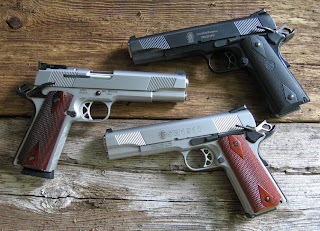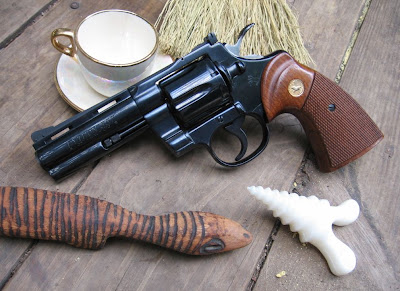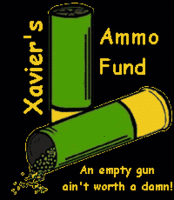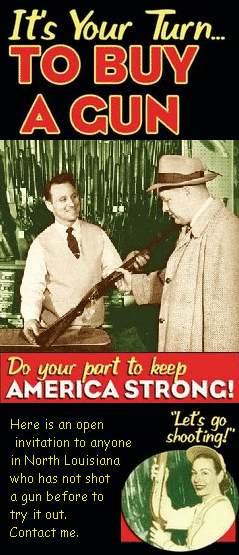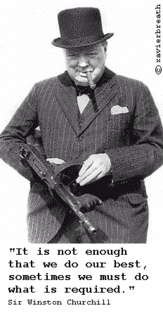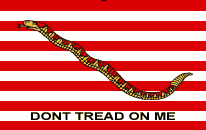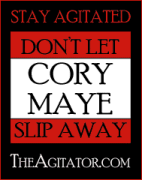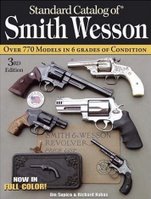"My next purchase would like to be a 1911, What do you recommend as a first 1911?"
It's not unusual for my opinion to be requested by people who are considering buying a 1911 for the first time. In many ways, the 1911 is emblematic of the gun world. It has it's aficionados, it's true believers, and it's know-it-alls. There are few experts. I often wonder why people ask my opinion, but it happens often enough that it must seem valuable to some. I want to quantify this blog post by stating I am no expert. I have owned a lot of different 1911 style pistols. I have shot a lot of 1911 style pistols. I carry a 1911. Those are my qualifications. I have not owned or shot them all though, and I'm certain there is much I do not know. This, however, is my opinion and advice, if you think it may be valuable, take it. It's your's. If you think it's opinionated crap because I don't fall to the altar of your particular brand of gun, you are welcome to your own opinion.
I do not mean to disparage anyone's pistol of choice here, only relate my experiences. This is not a blog post about what a 1911 is and is not. If you want to read my opinions concerning that,
go here. In this blog post, "1911" and "1911 style pistol" are synonymous.
The problem with choosing a first 1911 is there are so damned many of them. The 1911 is not just a pistol.
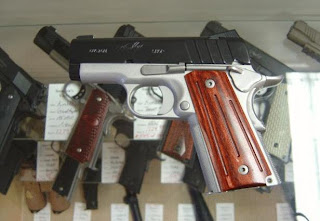
It is a weapons platform. The original patent expired years ago, and almost every major firearms manufacturer has produced at least one 1911 style pistol, often several. Some manufacturers, at any given time, can deck out an entire gun store in multiple variations of the 1911. Gun stores are unable to carry every possible variation, and they need to sell what they have in stock. The guy behind the counter will give you his opinion. He may be a seasoned shooter of the 1911, or he may be a know-it-all true believer of a particular brand. Unless you know him personally from the range, it's difficult to determine if he knows what he is talking about when your own knowledge base is spotty. He may have vested interests, and that's a bad thing when it's your money being spent.
Realize too, that your first 1911 may not be your last 1911. Some people feel like they got burned when the 1911 they chose did not live up to their expectations. The truth is, they just chose poorly. This blog post is about how to make the right choices for that first 1911, and how to continue to make subsequent wise choices on the next ones.
Explore the Possibilities
When one considers the myriad variations of the 1911, including custom guns, the problem of selecting only one quickly becomes apparent. There are too many possibilities to check them all out. The mind quickly becomes overwhelmed. Not having shot the pistol, it's difficult to know what you want. It's even harder to know what you need. But, to buy wisely, a person needs to know what they want, and have an idea of what they need.

Saying "I want a 1911" is like saying "I want an automobile." You should invest some time in research, and you have to look within yourself.
Like an automobile, the 1911 is often called an expression of a shooter's personae, and it's easy to get caught up in the expression of one's self when a person does not yet know their specific wants and needs. The difference is, with a mature 1911 shooter, the 1911 arrives at that expression honestly, over time. The trick is to get ahead of the "I just want a 1911" idea. Get some hands on research done. Try some 1911 style pistols out. If you have a rental range near by, go there and rent several 1911s to shoot. Try different sizes, calibers and examples from different manufacturers. Ask your shooting buddies if you can shoot their 1911s. Ask their opinions. If you are unable to shoot a few 1911s before buying, at least know what you do not want. Go to a gun show. Handle as many variations as possible. See what feels good, and what comes to sights readily for you.
Know your Purpose
The first problem of choosing a 1911 is narrowing down the field of bewildering candidates. It's a process of elimination. The 1911 performs many shooting tasks extremely well, but it is often modified from it's basic format to perform some tasks better than others. Knowing your reasons for wanting a 1911 as well as your intended purpose for it's use can narrow the field of candidates quickly.
Do you want the 1911 to have one in your collection? Yes, that's a valid reason. Do you admire the tradition and the history? Another valid reason.

If these are your reasons, then a military styled 1911 is your meat. Look for parkerized Government Models with small fixed sights a lanyard loop and high ejection ports. In order of expense, these include: Rock Island Armory, Springfield, Colt, and genuine GI guns. Each of these manufacturers make a GI styled 1911, and they will float your boat if you want a GI styled 1911. Such a pistol will serve admirably as a carry gun, although the finish must be oiled, the sights are small, and it requires a bit more effort in concealment.
Do you want a general purpose gun? Are you someone who just can't leave the tools in the tool box when you buy a gun? Do Brownell's and Midway regularly send you flyers? Are you looking for a gun to "grow with?" Look towards the Springfield Mil-Spec and the Colt 1991. These are pistols that are frequently purchased and later upgraded. If you already know you want a beavertail grip safety and swept back sights, consider a Smith & Wesson 1911 and a Kimber Custom as well. Not the Custom II, the
Kimber Custom. Just Custom, no Roman numeral II. No external extractor, and no Swartz firing pin safety.

You will have to buy used, unless you are extremely lucky and find the last bug free Kimber for sale on a dusty gun store shelf in Nowheresville.
Do you want a range gun? Is this gun one that will travel in a box to the range and shoot targets at a wide variety of distances? Then consider a 1911 with adjustable sights. In my opinion, this is the only reason to have adjustable sights on a 1911. You might consider a long slide gun for the greater sight radius and reduced recoil, and you may also want to consider a beavertail grip safety for ease of shooting for extended periods.
Will this gun be a carry gun? The Government Model is a pistol that carries very nicely in the right leather. If you are planning to pack your 1911 though, consider the smaller versions. The Commander has a shorter slide, but the same length grip frame, allowing you to use standard magazines. The Officer's Model has both a shorter slide and a shorter grip frame, and must use a shorter magazine. Avoid any pistol outside of these parameters. Occasionally a manufacturer will produce a version of the 1911 with an odd grip frame length that demands proprietary magazines.
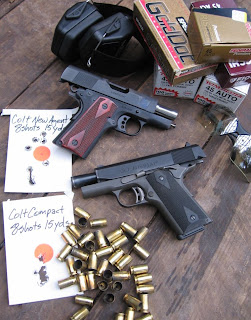
Avoid those like the plague. Finding magazines will be a pain in the neck. Many of the mini 1911s also have proprietary recoil assemblies that wear out quickly and cost money to replace. Reliability goes down as the slide and barrel shorten to less than four inches. Consider lightweight frames in a Commander sized pistol instead. Colt, Kimber and Smith & Wesson are all producing the 1911 in lightweight carry versions. Colt seems to make the most reliable micro 1911s. Springfield versions have less than stellar reports. Consider stainless pistols for corrosion resistance if you plan to carry your 1911. Think fixed sights. You will not have time to dial them in on your attacker, and you don't want them knocked out of adjustment on door frames.
One thought to consider is the 1911 is a weapons platform requiring specific training. In my opinion, your first 1911 should not be chosen for the purpose of being a carry gun. You should learn the weapons platform first, under experienced instruction, and then make the decision whether you want to carry it on your hip. If your first 1911 becomes your carry gun over time, great. Just don't choose a lightweight three inch 1911 and then complain because the recoil is to strong for you.
Will this be a gun to compete with? You need more specific instruction than I can provide here. Knowing the rules, regulations and needs of your form of competition is paramount. I advise you to consult with shooters who are already using the 1911 in your choice of competition. I will say this. Shoot the guns of other competitors. Do your research, and consider true bespoke custom guns. They are money well spent if the gunsmith is widely recognized. There are off the rack "semi-customs" from the likes of Wilson Combat, Les Baer, and Ed Brown among others, and then there are true bespoke custom guns from the likes of Clark Custom, Nowlin and other notable gunsmiths. Remember, repeatable accuracy costs money, and spending your money in the right place to start with is wiser than taking your pistol back and forth to Joe the neighborhood gun hack time and again.
Set Your Budget
The 1911 is an expensive pistol. The frame and slide can not be popped out of a mold like polymer guns and quickly assembled into a functional firearm. There seems to be several dividing lines in the price ranges of 1911 pistols. Sticking with your budget is important. Extending it a bit to get what you want may be more important. If you must wait an extra pay day or two before you can purchase the right gun, then do so. The right gun in a month costs less than the wrong gun now. The sting of a high price tag hurts less than the ache of a poor choice due to financial expediency.
Below $500 you will find pistols that have cast frames and slides, often manufactured in the Philippines.

Many 1911 guys sneer at these pistols, but they can present an attractive means of determining whether you like the weapons platform. I have never owned one of these pistols, but many shooters are quite happy with them.
Rock Island Armory seems to make some of the most reliable 1911s in this class. They are available in GI versions as well as updated versions. One issue that I have regarding these pistols is quality control of the castings and long term durability. Products from third world nations invariably have touch and go quality control. It's just the nature of the beast. One year, the quality may be adequate, the next, abysmal. Caveat emptor. Resale value on these guns is low, but then, you don't pay much for them to start with. Upgrading them is possible, but do not expect to recoup the investment if you sell.
In the $500-$700 range,
Springfield is the prime supplier. Their offerings include the GI45 for the traditionalists, and the Mil-Spec for those who want updating. For a general purpose 1911 in this price range, it's hard to beat a Springfield Mil-Spec.

The frames are forged, the fitting is good, and the warranty is second to none. If you want to know my usual recommendation for a person new to 1911s, that's it. The Mil-Spec is durable, accurate enough, and upgradeable if you have the inclination.
Other manufacturers sometimes offer upgraded 1911s in this entry range. Remember though, if they have an offering here, they cut costs somewhere. The frames may be cast, the small parts may be made of poorly formed MIM, the barrels may be cheap, the labor may have been outsourced overseas, or any combination of those concerns. The manufacturer struggled to reach this price point. Figure out how, and decide whether you can live with it. The
Taurus PT1911 can often be found in this price range. I have not shot one beyond a couple of range try outs, but they seem to be well made, and they get
good reviews. Among the Philippine cast frame 1911s in this range are the
Charles Daley Field 1911 at $649, and the
STI Spartan listed at $660. I have no experience with either of these pistols. 1911s from the higher price brackets will occasionally fall into this range used. If you are interested in a used 1911,
go here to learn how to check one out.
Many 1911 shooters advise a $700-$1100 budget to get started. This is because the choices really open up in this range, plus you have the lower price ranges to consider as well. You have a wide choice of materials and sizes. Most of the frames and slides will be forged.

In this range you will find beavertail grip safeties, dovetailed sights, a wide choice of sights, a variety of finishes, different calibers and more. Many of the small parts, and even barrels, are out sourced to aftermarket suppliers. The question is which ones. You will have to decide whether you can live with forward slide serrations, firing pin safeties, bushingless systems, full length guide rods and skeletonized hammers. Make peace with MIM or resolve to slowly purge it from your pistol piece by piece.
In this price range, as long as you stick with a major manufacturer and purchase a gun suited to your purpose, you should be satisfied. Those players are Colt, Springfield, Smith & Wesson, and STI. Kimber used to have my recommendation until they began the Series II guns. The Kimber Custom and all the Series 1 guns raised the 1911 bar and forced Colt off it's laurels. The Series II Kimbers suffer from a poor reliability history. Sig Sauer made some of the ugliest 1911s ever and deposited them in this price range. Those are not known for reliability either. Paraordnance...... What can you say about Para? Cast slides from Canada and mutant double stacked double action pistols that revolutionized competition.
When a 1911 buyer has a budget above $1100, the choices really expand. This is the world of the production "semi-custom" gun, and the domain of diminishing returns.
Wilson Combat established this arena, followed by
Les Baer and
Ed Brown.

What the buyer of these guns should expect is superior fit and finish, and extraordinary customer service. In the domain of diminishing returns, the proof of these guns is on the paper. These guns shoot, and they shoot accurately. Most shooters will never harness the potential that these guns possess. Indeed, to demonstrate this accuracy, the guns are benched or locked in a Ransom Rest. Many people love these guns. They worship them, they crave them, they swear by them. They compete with them, and God help the man who disses their gat.
If you, as a person new to 1911s are considering one of these pistols, you probably did not do your research very well. You likely have heard horror stories of unreliable 1911s and you hope to avoid that with a bit more cash. Guess what? These guns fail too. They are not magic talismans against the nefarious 1911 gremlin. They just cost more money, look a bit prettier, and give you empty bragging rights at the range. The real measure of a 1911 is no failures with repeatable holes in the X ring. Other 1911 pistols can do that too, if the shooter can.
What many shooters fail to realize is that for the price of some of these off the shelf "semi-custom" production guns, they could purchase a true bespoke custom.

Of course, if they were going to order such a gun, they would be expected to inform the gunsmith of exactly what they want. That is where buying and shooting one of the other 1911s comes into play. You will not, you can not know what you want and need unless you shoot the gun, and shoot it over a number of months if not years. Still, if you want to spend this kind of scratch on a first 1911, give
Nowlin or
Clark Custom a call. You might be pleasantly surprised.
Another note.....genuine GI guns, Colts, Ithacas, Remington Rands, Union Switch & Signals, Singers and Springfields (the
other Springfield) also fall into this price range. These are shootable investments if you ask me. Like any investment though, you had better know what you are doing, or you will lose your ass. These historical firearms are not reasonable choices as a first 1911 for a person who plans to shoot the gun.
Choose a Caliber
Once you have set your intended use and your budget, consider caliber. 1911s come in many calibers. .22 Long rifle; .38 Super; 9mm; .40 S&W; 10mm. .45 ACP (who woulda thunk it?)
460 Rowland, and even
50 caliber.

The usual calibers you will find available though are .45 ACP and possibly 9mm and .40 S&W. The 1911 was designed to shoot .45 ACP. It seems to be most reliable with that load. If the price of ammunition is a concern, consider ordering a 9mm 1911. Other than that, in my opinion the first time buyer is best advised to stick with .45 ACP.
Those .22 conversion kits? Buy a used Ruger MKII or 22/45 instead. The target practice will transfer over and the Ruger will be more reliable. If you are thinking a 22 conversion kit would allow you to train with your carry gun for less, that is true. But you are training without the recoil. You may as well dry fire in the comfort of your home.
Many people find that the recoil of a .45 is surprisingly manageable compared to other calibers. In a full sized gun, it gives more of a push than a snap and torque. In a heavy pistol such as a Government Model, most people do not find it to be unpleasant, especially if they are trained to grasp the weapon with the web of their hand as high beneath the grip safety as possible. This effectively lowers the bore axis of the pistol to be in line with the wrist, making for a easily controlled recoil impulse. More important than the caliber (at least between 9mm and 45 ACP) is the size of the pistol. The Government Model pushes the shooter's hand in recoil. The Commander has a bit more snap. The Officer's Model has both snap and torque. Strangely,
I found lightweight frames to not be much of a factor regarding recoil. For me, when it came to managing recoil, it was the length of the barrel and slide that mattered, not the weight of the frame.
Roll Your Own
I don't advise this for a new 1911 shooter. Period.
What to do when you get your 1911
Lock up the Dremel. Buy ammo. Use up. Repeat. Buy a holster. Invest in experienced instruction. Resist the temptation to purchase anything,
anything for your pistol from Brownell's Midway or anyone else. Buy more ammo. Use up. Repeat. Field strip your weapon and learn to clean and lubricate it properly. Then learn to detail strip it. Put it back together and buy ammo. Use up. Repeat. Let the gun you have teach you about the gun you want, and the gun you need. Finally, after shooting the pistol for three to six months, allow yourself to purchase a new pair of grips if you like. Buy a couple of extra magazines. Fill them with ammo. Use up. Repeat. If the gun doesn't point for you like you think it should, try a different mainspring housing. If you want to change the sights, and you have a dovetailed slide and the mechanical aptitude, swap them out. Let the pistol become your own depending on your needs and desires. Or don't. It might be the perfect pistol from the beginning. I doubt it though.
Related Posts
What is a 1911?The Best 1911 for You 1911 SizesBuying a Used 1911Chris Byrne's Primer on Buying a 1911The "First Handgun" question by Chris ByrneThe 1911 ForumLabels: 1911 Basics, 1911's
 When that happens, you have to know how to take care of yourself. It's something that can happen to any serviceman, or service dog.
When that happens, you have to know how to take care of yourself. It's something that can happen to any serviceman, or service dog.  I could hear him up there talking trash to her, and I backed out as quick as I could to help out. I have her back, you know....... By the time I came out the other side, she had taken care of business. She's learning quick.
I could hear him up there talking trash to her, and I backed out as quick as I could to help out. I have her back, you know....... By the time I came out the other side, she had taken care of business. She's learning quick.  This morning I went to see the white coat guy, the one with all the dogs and cats. He's a friendly sort.
This morning I went to see the white coat guy, the one with all the dogs and cats. He's a friendly sort. 

























